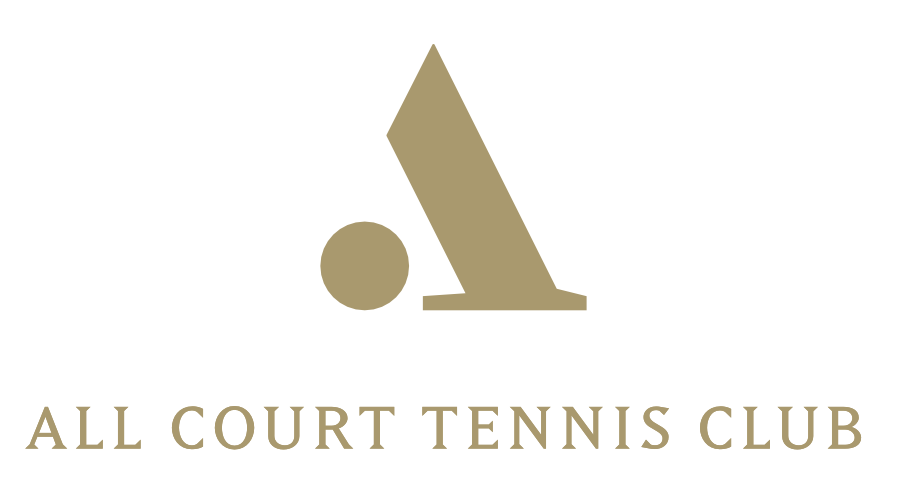An infiltrating Pickleball player photographed near a sign-up sheet at Cpl. John A. Seravalli Playground, New York. Photo: Gothamist.com
A new turf war has broken out in New York City and other major metropolitan locales around the country, and it has nothing to do with bloods, crypts, guns, knives or drugs — and everything to do with Padel and a “dill ball.”
Yes. While tennis courts are still nearly impossible to come by, Pickleball, a cross between tennis, whiffle ball and badminton, has swept across the blacktops of Manhattan’s spare lots, taking over the spots where children used to jump rope and merrily play kickball. Now, on any given square inch concrete from Harlem to the Battery and even the Wollman Ice Rink in Central Park, horrified, bemused or curious onlookers will find adults in athleisure chalking out their ground, hanging waist-high nets and charging at each other to whack a small, plastic orb for points.
Pickleball, once relegated to tennis clubs looking to bring back members, has become the fastest-growing American sport. It’s also become one of the most treacherous pastimes, filling local newspapers across the country with news of fights, arrests, vandalism and other skullduggery. In Manhattan, Ground Zero for the Pickleball wars is Cpl. John A. Seravalli Playground, an acre stretch of open asphalt — long popular with local children — where park officials no sooner erase makeshift courts before regulars draw them again. Outraged residents have called several City Council meetings to control the outbreak, to no avail. “The magic of pickleball is it can be played anywhere, on any asphalt,” said Samir Lavingia, a Pickleball enthusiast who urged the New York City Council to close roads for court space as a solution.
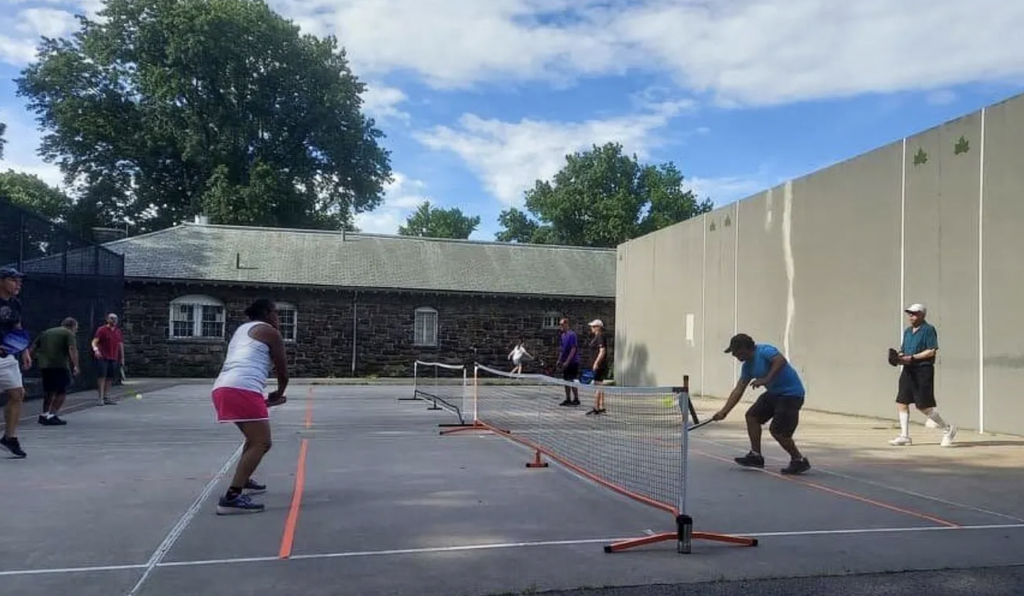
Impromptu Pickleball players at Central Park’s 97th Street North Meadow handball courts. Tennis players formerly used the walls to practice.
But what is Pickleball, exactly? And does the fun of it deserve this disarray? How does it compare to tennis or that other racquet sport taking Europe middle-Agee by middle-ager: Padel ball?
In form and function, Pickleball might be the truest to the origins of Lawn Tennis, the sport invented in 1874 by Major Walter Clopton Wingfield. Wingfield, of course, took the game with which Harry Gem and Augurio Perera were experimenting with in Birmingham, boxed it up and started selling sets that included wooden racquets, rubber balls, a net, poles, an instruction manual, and… court markers.” The carefree Victorian masses could pick up a kit at the local PoundSaver — or it’s 19th-century equivalent — stake out the ground on a lawn and start playing within minutes.

An advertisement for one of the first lawn tennis kits made by Major Wingfield.
Much like its cousin — as anecdotes suggest — Pickleball is the product of the whimsical 1960s and bored, spoiled children, as well as their three Republican Baby-Boomer dads: Joel Pritchard, a Republican state representative and later a U.S. congressman; Bill Bell, a businessman; and Barney McCallum, a printing-company owner. All were vacationers on Bainbridge Island, Washington; all had kids with “nothing to do on Bainbridge,” said Frank Pritchard, Joel’s son. “(My dad) said that when they were kids, they’d make games up.” The elder Pritchard promptly took down the backyard badminton court, went to the back shed and grabbed a plastic perforated ball from whiffleball set, and added table tennis paddles to the mix. Joan Pritchard — wife of Joel, mother of Frank — came up with the name “Pickleball” as a reference to the game’s thrown-together, leftover nature. Later in the sport’s history, an interested neighbour crafted squarer paddles.
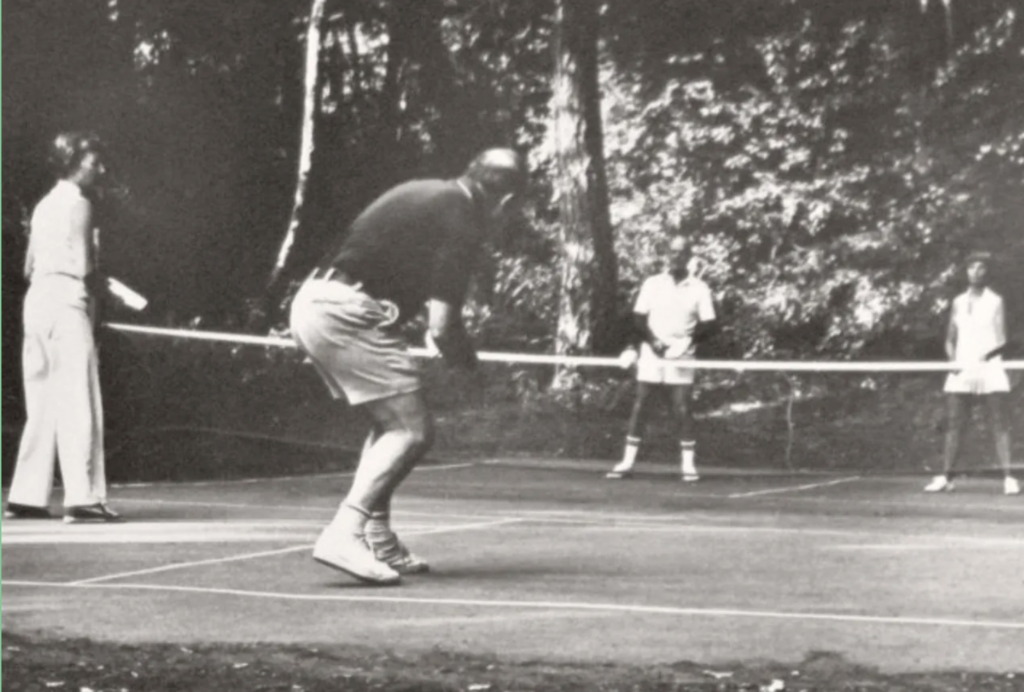
An early Pickleball match on Bainbridge Island, Washington.
In terms of rules and scoring, Pickleball is nothing like tennis, however, and more like squash. Games are played to 11 (or 15 and 21 during a tournament) and won by two points. After an underhanded serve, which supposedly makes the game more equitable, there is a two-bounce rule — receiving side and serving side — before each team tries to make the other one “fault” or fail to return the ball, hit the ball out of bounds or smack the ball into the net. The server continues to serve, alternating service courts, until the serving side faults and allows the opposition the ability to serve and thereby, score. A few more rules apply — and they get even more complicated than tennis.

Padel players at El Teu Clud de Tenis y Padel in the heart of Barcelona, Spain.
In Europe, the new Pickleball, however, is actually called Padel — short for Padel tennis, and unlike the random, laissez-faire nature of its American tennis knockoff, Padel actually has courts, leagues, decorum and the general feel of the original racquet sport.
The problem that Padel solved for would-be tennis players was, of course, space. In 1969 in Acapulco, Mexico, Enrique Corcuera, a wealthy professional,didn’t have enough space to put in a tennis court. Instead, he lengthened his squash court, stuck a net in the middle and put glass walls around it to play what he christened “Paddle Corcuera“. Corcuera gave his Padel essentially the same rules and scoring as tennis, with the exception of the ability to hit the tennis ball off the wall and a mandatory underhand serve (new sport, Nick Kyrgios?). Padel racquets are half-tennis racket, half-table-tennis paddle, meaning they are shorter and solid in the middle.
Of course, Corcuera couldn’t keep the game to himself. Anyone who stayed with him in Mexico played Padel, including aristocrats from Spain and entrepreneurs from Argentina. Enrique’s Spanish friend Prince Alfonso of Hohenlohe-Langenburg, the “playboy who who made Marbella into a glamorous resort,” returned from Mexico to Spain a changed man after trying Padel. He created the first two Padel courts at a tennis club there in 1974. Not long after, Julio Mendieguy, an Argentine millionaire and frequent guest of Marbella, brought the sport to his home country.
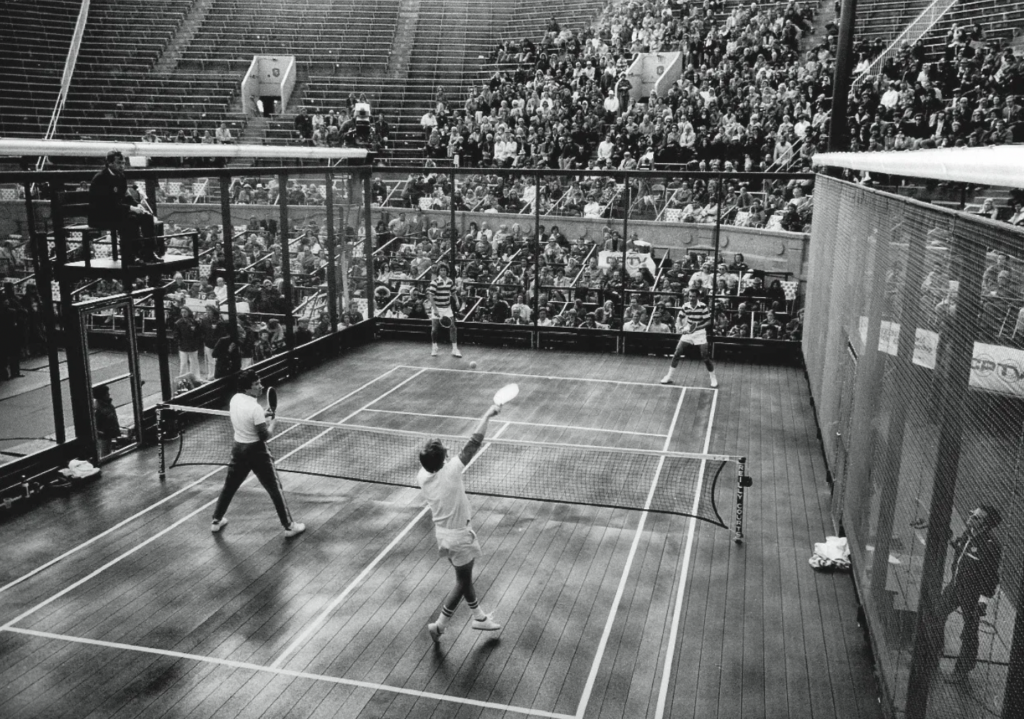
An early Padel match played in Spain during the 1970s. Padel and platform tennis and lawn tennis have similar rules. The only difference is surface — and racquet.
Today, over two million Argentinians play Padel on more than 10,000 courts across the country. By 2005, Padel had taken over 1,000 clubs in Spain and the various Padel Associations banded together to form the Padel Pro Tour (PPT), followed by today’s governing body, the World Padel Tour (WPT). In England, a group of expats living in Spain formed the British Padel Association (now known as LTA Padel) and by 2011, David Lloyd Leisure — Europe’s largest health and fitness club chain — installed the country’s first Padel courts. England now has more than 165 public courts, including at Hyde and Regents Parks, the LTA headquarters in Roehampton and various individual clubs, such as the prestigious Surbiton Racquet Club, which ceded precious tennis courts used for its Wimbledon challenger for its new Padel center.
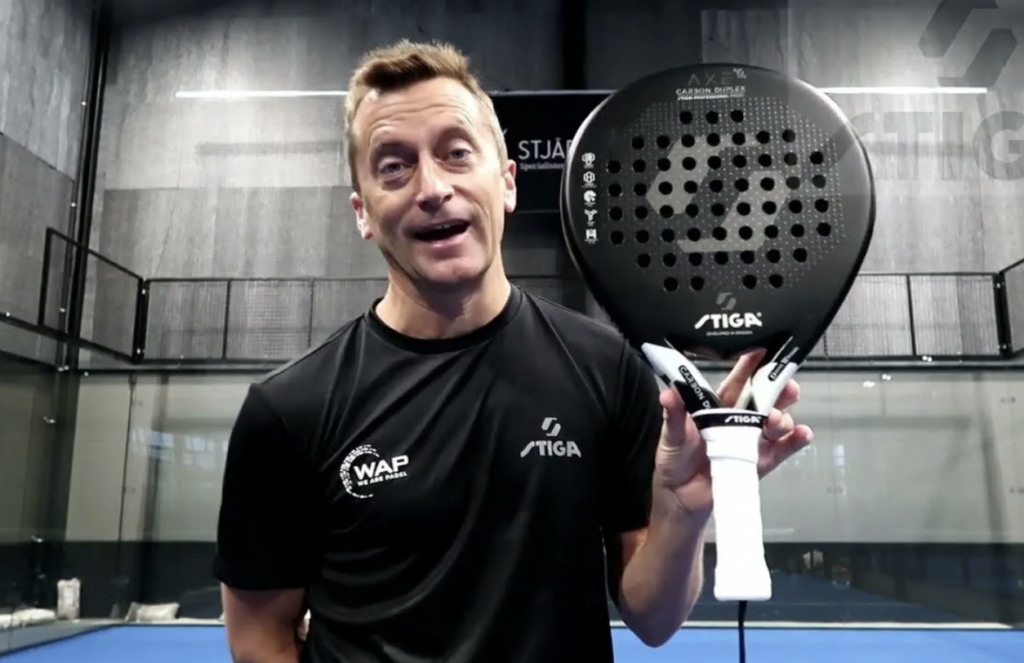
Dan Dios, the father of modern Padel seen hawking his new Padel racquet. “Within two years, we’re going to see a huge explosion,” said the former captain of the Swedish national team and a Padel business developer. “All eyes in the European Padel brands right now are on the UK market, waiting for that explosion to happen.”
Could this be the point at which a tennis-like sport actually splits the U.S. and Europe?
Since 2020, a burgeoning Pickleball pro scene has also been accelerated by two tours in the U.S., the A.P.P. (Association of Pickleball Professionals) and the P.P.A. (Professional Pickleball Association), which run more than fifty tournaments a year. The prize money isn’t great, but sponsorships attract hundreds of players to the circuit. Ben Johns, the sport’s biggest star, estimates that he earned $250,000 in 2021, and as entrepreneurs latch on to the game, more money is coming.
Generally, people play because they like the games democratic ethos — that is the reason mostly given. And it’s easier to learn and play than tennis. “You sign your name up on the board, and you have a blast,” said Sherry Scheer, a former tennis coach and a pickleball senior pro, told the New Yorker in July. “Pickleball doubles partners tap paddles between every point, win or lose, and skilled players have tended to be generous about playing with less skilled players,” the article goes on to state.
But tennis players do much of the same. As do Padel. It all begs the question of whether Pickleball survive the snappier shots, the frenetic, close-range volleys (known as “hand battles”) and the ambitions of the celebrities and entrepreneurs. Or will tennis history just repeat?
It’s a close line call in Manhattan. A petition to stop pick-up Pickleball has garnered nearly 3,000 signatures. Its backers include the influential Greenwich Village Little League, and at least four other downtown sports leagues. “The park used to be teeming with kids playing basketball and football and tag and chase. Now they’ve stopped going. It’s all adults playing pickleball,” a local parent Allan Trub, told Gothamist. “It’s not a coexistence, it’s a complete and utter takeover.”

Ben Johns, the United States’ most famous Pickleballer, started out playing tennis.
